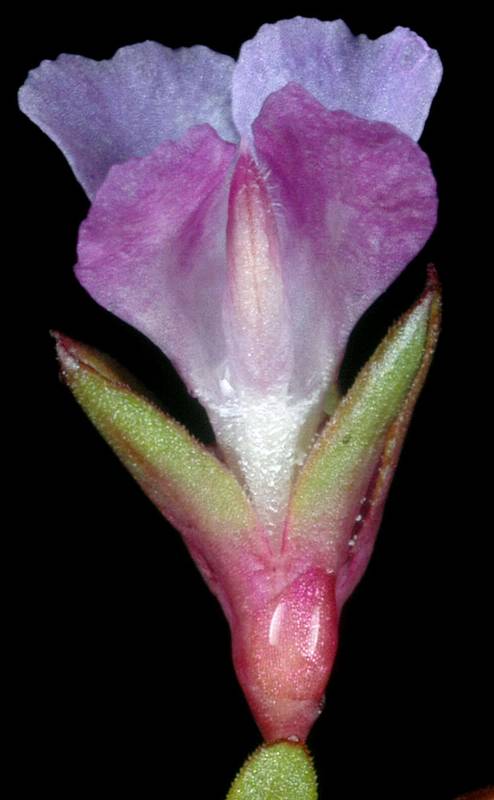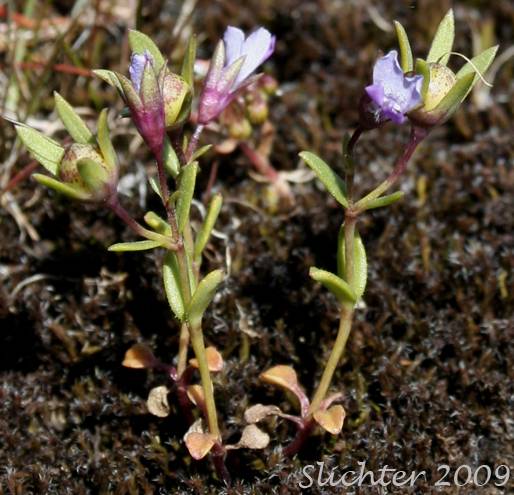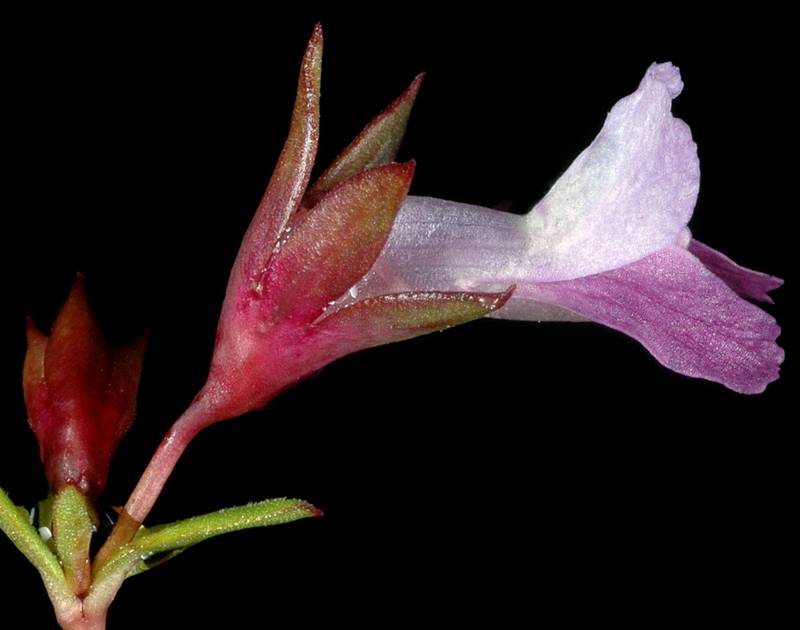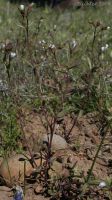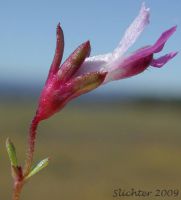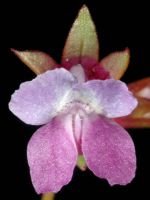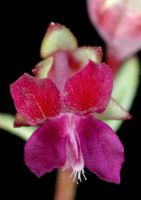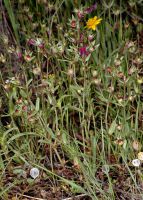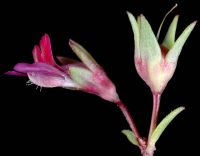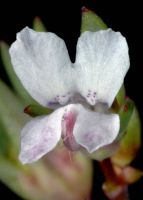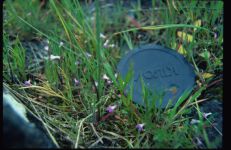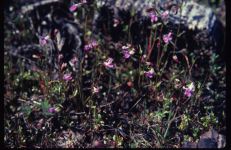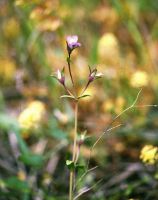Distribution: Occurring in the Columbia River Gorge in Washington; south-central Washington to adjacent northern Oregon, east to western Idaho.
Habitat: Open slopes, swales, forest edge, and balds.
Flowers: March-April
Origin: Native
Growth Duration: Annual
Conservation Status: Threatened in Washington (WANHP)
Pollination: Bumblebees, bees, flies, beetles, wasps
Annual, the stems 5-20 cm. tall, erect, simple or branched, glabrous.
Leaves opposite throughout, the lower petiolate, broadly elliptic to ovate, the blade up to 1 cm. long, often few-toothed; other leaves linear to linear-lanceolate, becoming sessile upward, up to 3 cm. long and 5 mm. wide.
Flowers 1-3 in the axils of reduced upper leaves; calyx 5-11 mm. long, the 5 lobes lanceolate, acute, much longer than the tube, concealing the corolla tube; corolla bi-labiate, blue-lavender to white, 8-11 mm. long, the tube abruptly bent near the base, forming an oblique angle with the calyx, and strongly gibbous on the upper side near the bend; stamens 4, the upper pair of filaments spreading-hairy.
Capsule sub-globose, 4-6 mm. wide.
Publication: Index Seminum [St.Petersburg (Petropolitanus)] ii. 33. 1836.
-
var. sparsiflora – few-flowered blue-eyed Mary
 Occurring in the Columbia River Gorge in Washington; south-central Washington to adjacent northern Oregon, east to western Idaho.
Occurring in the Columbia River Gorge in Washington; south-central Washington to adjacent northern Oregon, east to western Idaho.
PNW Herbaria: Specimen records of Collinsia sparsiflora in the Consortium of Pacific Northwest Herbaria database
WA Flora Checklist: Collinsia sparsiflora checklist entry
OregonFlora: Collinsia sparsiflora information
E-Flora BC: Collinsia sparsiflora atlas page
CalPhotos: Collinsia sparsiflora photos

